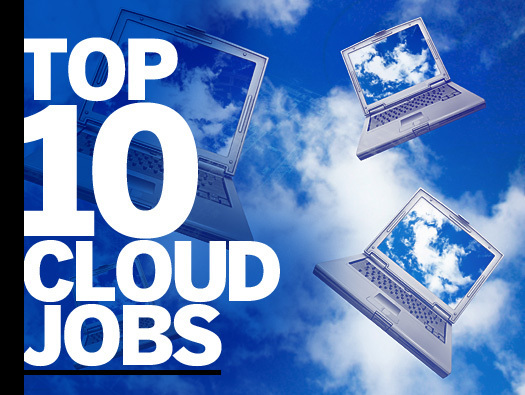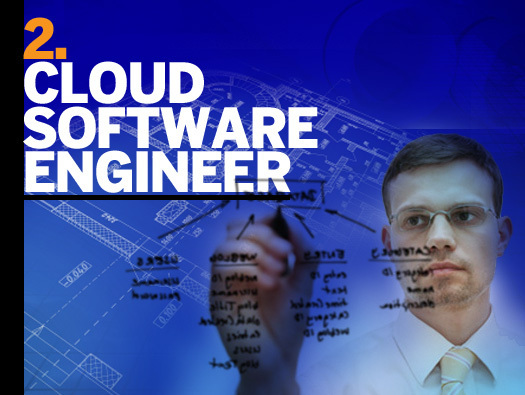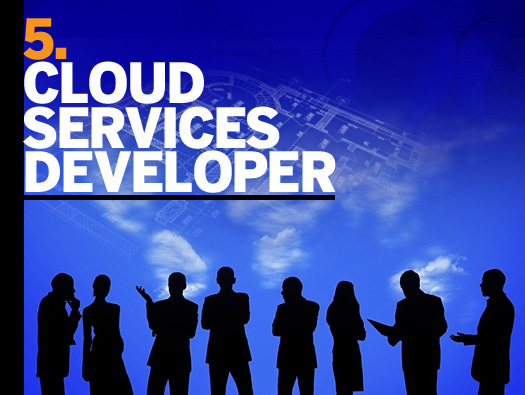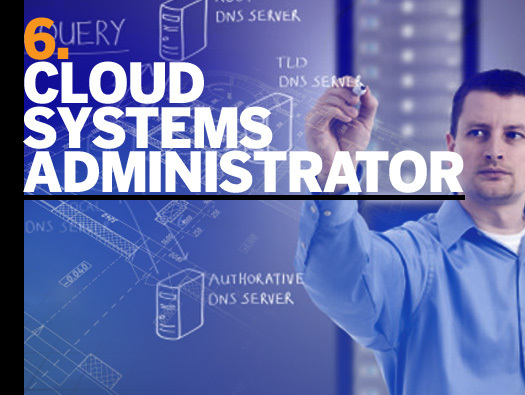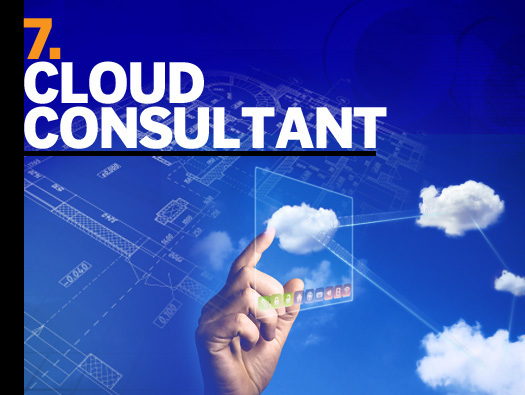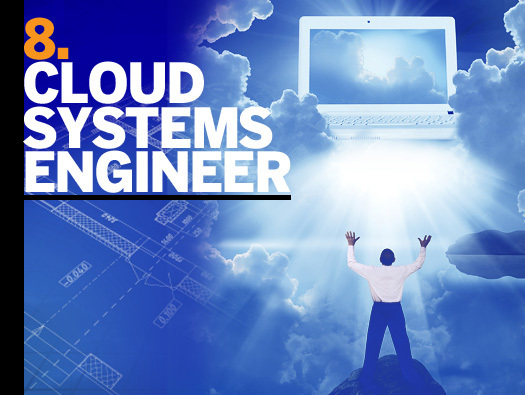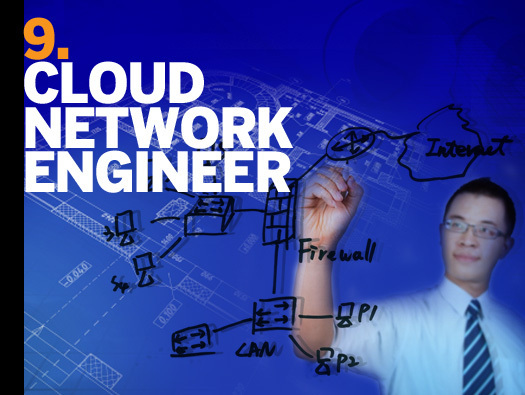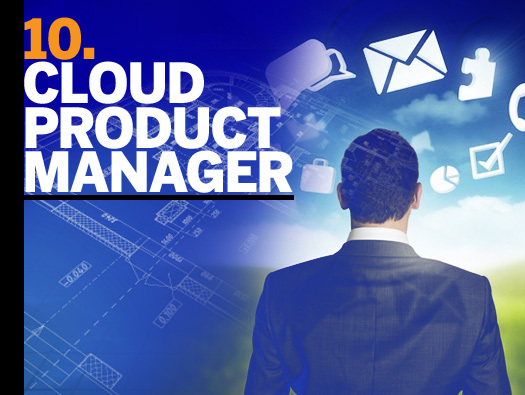2013: Year of the hybrid cloud
Hybrid clouds, cloud brokers, big data and software-defined networking (SDN) predicted to be the major trends in cloud computing in 2013.
The time for dabbling in cloud computing is over, say industry analysts. 2013 is the year that companies need to implement a hybrid cloud strategy that puts select workloads in the public cloud and keeps others in-house.
“Next year has to be the year that enterprises get serious about having real cloud operations as part and parcel of their IT operations,” says John Treadway, vice president at Cloud Technology Partners, a consultancy.
10 cloud predictions for 2013
Careers in the cloud
Treadway says that in the last year, he and his colleagues have worked with many large enterprise clients who have implemented half-baked, haphazard cloud infrastructure schemes – most of them private and developed in-house.
They have some virtualization, explained Treadway. And they may even have some automation. “But when you peel back the onion you can’t find the type of cloud infrastructure where you can request a resource and have it provisioned automatically on the fly. There is still a lot of human labor involved in those processes,” Treadway says.
He expects most of these in-house private clouds to be abandoned in favor of more strategic hybrid mixes of public cloud services and more commercially packaged private clouds services like those based on OpenStack standard or VMware’s vCloud.
Prediction 1: Hybrid clouds will take off
“I’m convinced 2013 is going to be the year of the hybrid cloud infrastructure,” says Tracy Corbo, principal research analyst at Enterprise Management Associates.
“Cloud infrastructure outages happen. That’s a fact that is not going to change. So it only makes sense for an enterprise to take a look at the workloads they can put in the public cloud where there lies the bigger risk of outage and data loss and those that should be placed on a more controlled private cloud,” Corbo says.
Meeting the challenges of hybrid cloud computing infrastructures
That hybrid infrastructure as a service (IaaS) split is likely to be divided between the systems of engagement (customer service systems, for example) and the systems of record (like back-end financials), explains Chandar Pattabhiram, former marketing executive at Cast Iron, a cloud integration company purchased by IBM, and currently vice president of marketing at Badgeville, a company specializing in gamifying cloud applications.
Hybrid cloud deployment is not a new concept. Research published by Gartner shows that the hype surrounding hybrid cloud reached its peak last summer. According to Gartner’s research scheme, early adopters take on a technology at the peak of the hype cycle, then there’s a period of disillusionment when stories of early adoption failures come out. That’s followed by a slow adoption phase, when vendors begin delivering on second- and third-generation services. Finally, there’s the phase where adoption becomes mainstream.
Amazon is still the uncontested leader in the public IaaS cloud space, with expectations that it will continue to pull down more than $2 billion annually in that market. But vendors with long and strong ties to the enterprise are all rolling out public offerings alongside their private cloud services.
For example, HP jumped into the public cloud market last summer when it rolled out its OpenStack-based HP Cloud Services. According to Dan Baigent, senior director of business development for HP Cloud Services, there is certainly a “pent-up” need for public IaaS. “We expect to see the most interesting growth patterns in that space,” he says, arguing that HP’s long-standing relationship with enterprise customers will help it make inroads there. It’s difficult for enterprises to support multiple clouds from different vendors, Baigent says, and getting both parts of the hybrid cloud from the same provider can simplify that prospect.
Treadway argues that many public cloud vendors will go under. “It’s very hard to play in the Amazon game. The margins are small and if you don’t offer a differentiating value, you are very likely going to fail,” Treadway says.
Lydia Leong, research vice president at Gartner, agrees that 2013 will see some corrections to the public cloud market, pointing to Web hosting vendor GoDaddy quietly closing the doors on its public cloud operation in October as a prime example. “These closures certainly don’t give any kind of signal that cloud computing is a failure. They simply demonstrate that it doesn’t make sense for every vendor to compete in that market,” she says.
Prediction 2: Hybrid-cloud management becomes key
If hybrid clouds are the deployment of choice, EMA’s Corbo says the IT industry has to make significant inroads on how to manage that type of environment in terms of resource provisioning, scalability and performance.
“It’s unfortunate that the IT industry seems to build infrastructure, and managing it is always an afterthought,” Corbo says.
IDC issued a report in August that said the worldwide cloud systems management software market grew dramatically, totaling an estimated $754 million in 2011, an increase of 84.4% over 2010. The top two vendors, CA Technologies and VMware, benefited from market demand for a range of capabilities beyond self-service provisioning.
These include automated infrastructure orchestration and virtualization management used to enable dynamic infrastructure resource pooling and sharing across multiple workloads and user groups, and the ability to track cloud resource consumption to support life-cycle management, capacity planning and chargeback.
IDC listed the other top players in that market – determined by revenue – as HP, IBM and BMC. That said, more than 63% of the revenue these companies raked in came from sales to companies managing private clouds only.
IDC expects most successful cloud systems management software vendors will offer customers a wide range of capabilities beyond self-service portals and automation and will be architected to support heterogeneous hypervisor and hardware platforms, as well as a range of hybrid cloud scenarios.
RightScale, a company that bucks Corbo’s assertion that management is an afterthought, has offered a service since 2006 that integrates with multiple clouds and allows users to view federated cloud deployments from a single dashboard. The company boasts of a 4.7 million customer base supporting a variety of public and private cloud platforms, including Amazon Web Services, Windows Azure, Google Compute Engine, Datapipe, HP, Logicworks, SoftLayer and Tata. On the private cloud side, RightScale can be used to manage workloads on the OpenStack, CloudStack and Eucalyptus platforms, all of which are open source.
Other startups that have jumped into this space include Cohuman, Okta, Scalr, Tier 3.
Brian Donaghy, CEO of Appcore, a cloud services company in Des Moines, Iowa, that offers a portfolio of private, public and hybrid services, says that developing the skills to manage a multi-cloud environment will make IT professionals a hot commodity in the next year as well.
Prediction 3: Cloud brokerages and integration hubs will explode
Early adopters of the cloud tended to take on the technology when they were building singularly focused greenfield applications. “So the issues associated with integrating either legacy systems or other cloud-based application was not so urgent,” says Martin Capurro, a product manager at Savvis Direct, a public cloud service offered by national telco CenturyLink. “They are now.”
IDC predicts that by 2015, nearly $1 of every $6 spent on packaged software, and $1 of every $5 spent on applications, will be consumed via the software as a service (SaaS) model. As enterprises buy more and more of their applications as SaaS, issues of integrating the applications themselves, developing security and auditing processes across them, and figuring out how to create B2B links with partners using the same applications will all need to be addressed.
Cloud service brokerage (CSB) schemes set up by cloud providers themselves seek to address the first problem while systems integration services and integration hubs seek to address the latter two.
10 SaaS delivery companies to watch
“CSB” was the phrase for cloud arbitrage that Gartner coined in 2009. More recently, NIST has defined this category of service providers as “an entity that manages the use, performance and delivery of cloud services and negotiates relationships between cloud providers and cloud consumers.”
Practically speaking, CSBs are the middlemen that aggregate SaaS applications in the cloud and supply a portal by which its customers can buy, access and somewhat control the use of multiple multi-tenant cloud applications within their own companies. The broker negotiates a good price that is passed onto the customer, provides a single point for end users to sign onto these applications and presents the IT department with one monthly bill.
According to Treadway, integration hubs – defined as single integration points between multiple cloud applications – are much needed today, but are more difficult to pull off than CSBs. That’s because many custom-built cloud applications are not built using standard APIs, which means that linking them to any other application requires a spaghetti network of connections that is nearly impossible to maintain, he says. The problem is further exacerbated by the proliferation of devices most cloud applications are now required to support.
Almost every major player in the IT space that bases a big chunk of its business on integration has a play in this market, as well. Startups include Cordys and Informatica.
“The advice I give clients is to make sure they have a comprehensive integration strategy developed upfront, and only build or buy applications that have standard APIs and were built within a service-oriented architecture,” Treadway says.
Prediction 4: Big data analytic tools will get better
Big data — the voluminous amount of unstructured or semi-structured data a company creates for which it is cost prohibitive to load into a relational database for analysis — just gets bigger and bigger in the cloud and businesses are realizing they can’t afford to ignore that fact.
Using very geeky predictive modeling and data mining principles, big data analytics tools let users digest volumes of transactional data and other streams like those collected from Web server logs, social media reports and mobile-phone call records that have not previously been tapped by business intelligence tools.
Cloud Illustration: Stephen Sauer
“What they want is actionable analytic big data tools that give them the right information to make business decisions in real time,” Treadway says. But innovation in this space, he says, is random at best.
According to CB Insights, a consultancy that tracks venture capital activities, analytics companies have taken the majority of $1.1 billion in big data venture capital funding deals on record since the second quarter of 2011. These analytics companies include those offering real-time data, such as Metamarkets, and others offering analytics solutions, such as Datameer.
But established companies are also investing in this area. Take HP’s acquisitions of both Vertica (a data analytics firm bought in February 2011 for an undisclosed amount) and Autonomy (a U.K.-based information management software firm bought in August 2011 for $10.3 billion). Prior to HP’s spree, IBM and EMC had already bought big data analytics databases, scooping up Netezza and Greenplum, respectively.
“It’s invaluable to our customers to be able to have the ability to put a wrapper of knowledge around the hordes of data coming into a company through its cloud deployments,” HP’s Baigent says.
Prediction 5: “SDN” will become just “networking”
The idea of software-defined networking rocked the networking world in 2012.
Inside the SDN scheme, the control plane gets decoupled from the data plane in network switches and routers. The control plane runs as software on servers and the data plane is implemented in commodity network equipment.
In July, cloud server software giant VMware plunked down $1.05 billion in cash and another $210 million in assumed unvested equity for Nicira, an SDN startup that had lured high-profile talent away from both Juniper and Cisco.
Cisco’s initial reaction to the prospect of SDN was called Cisco Open Network Environment (Cisco ONE), which is a architectural scheme designed to enable Cisco networks to be flexible and customizable to meet the needs of newer networking and IT trends such as cloud, mobility, social networking and video. And then Cisco made some announcements with the OpenStack community in support of its open source SDN projects, and in November, the company agreed to pay $1.2 billion in cash to acquire Meraki, a San Francisco-based provider of networking systems that can be managed from the cloud.
“All of these moves just point to the eventual realization that software-defined networking is just going to collapse back into a new definition of networking that is going to evolve in 2013,” says Terremark CTO John Considine.
Prediction 6: Gamification will drive sales and customer service.
Gartner predicts that by 2014, 70% of all Fortune 2000 companies will have at least one cloud-based application that employs game theory to influence employee or customer behavior. According to Badgeville’s Pattabhiram, many of them already do, and next year will simply be the year that people sit up and take notice of how effective those applications are in driving business opportunity.
Gamification is the concept of applying the psychology of game-design thinking to non-game applications to make them more fun, engaging and addicting. The psychological carrots include the need for public recognition and the thrill of competition. The applications in the business world include boosting sales, encouraging collaboration and information sharing among employees and partners, and increasing customer service satisfaction.
There are more than 50 gamification products, platforms and services available on the market including Badgeville, BunchBall, Crowd Factory, Gamify.it, Hoopla, Kudos, Objective Logistics and Rypple (a Salesforce.com company) to name only a very few.
Pattabhiram contends that the potential benefits of gamification to the enterprise, should it be implemented next year, are behavior management, rewarding participation, controlled social mechanics and behavior analytics.
Prediction 7: Hybrid security options will bloom
IDC security analyst Phil Hochmuth has no doubt that there will be security breaches in the cloud next year, whether we get wind of them or not, mainly because of the fact that using hard-to-control mobile devices is the dominant means by which employees are accessing the cloud.
“That is one of the biggest reasons we are seeing most vendors take on a hybrid delivery model for their security products,” Hochmuth says. Under this scheme, security vendors are offering – and enterprises are deploying – the traditional appliance-based security products for on-premise access and then enlisting a SaaS product – most of the time from the same vendor to help facilitate unified security management policies — to shore up secure access from mobile clients. IDC predicts that over the next three years, hybrid deployments will comprise 60% of all deployments, a market the firm says will balloon to $3.3 billion by 2016.
Prediction 8: Data sovereignty issues will multiply
Controversy about the jurisdiction and legality of data stored in the cloud and outside of a customer’s home country will erupt as cloud adoption grows in 2013, says Jim Reavis, executive director of the Cloud Security Alliance.
But don’t expect government policy changes to help mitigate the problem, Reavis says. Greater customer awareness of data residency options, such as format-preserving encryption, will help mitigate these concerns and technological innovation will have a greater impact on solving this global policy question than government action.
Prediction 9: IaaS-based services will expand
EMA’s Corbo predicts there will be an increase in services delivered as part of standard IaaS offerings.
“You will see IT folks thinking hard and long about what other infrastructure services can be off-loaded into the cloud,” Corbo says. Specifically, she expects to see growth in the areas of WAN optimization (a service is already offered by a startup called Aryaka and mainstays such as Cisco and Akamai have made some movement in this direction) and load balancing as a service in the cloud (Amazon and Rackspace both offer these services).
“It’s not a question of being able to do this stuff in-house. It’s a matter of figuring out if it’s cheaper and more efficient to do it in the cloud,” Corbo says.
Prediction 10: Prepare for more outages and shakeouts
Corbo and Gartner’s Leong were in sync on their prediction that if customers are asking the public cloud infrastructures to take on more and more responsibilities, then they should be prepared to accept more downtime as well.
Outages are bigger risk than breaches
“Outages will happen as a matter of course,” Leong says. “It can’t really be helped when you take into consideration all of the permutations of all the services riding on these infrastructures. There is no way every contingency can be tested for.”
CSA’s Reavis warns that customers should be prepared for other kinds of failures in the cloud in 2013 as well: business failures.
Since we are in a natural part of the entrepreneurial business cycle for cloud, we can expect to see several cloud startups get acquired, change their business focus or go out of business entirely, Reavis says.
“These shakeouts will have differing consequences impacting the availability of customer data and information systems. Customers need to make sure they are mitigating these risks through a combination of building redundancy in cloud security architectures and performing due diligence in cloud business relationships,” he says.

Best Microsoft MCTS Certification, Microsoft MCITP Training at certkingdom.com





 HP ExpertOne
HP ExpertOne HP ASE – Cloud Architect v1
HP ASE – Cloud Architect v1
 Microsoft MCSE – Private Cloud certification
Microsoft MCSE – Private Cloud certification Oracle Exalogic Elastic Cloud X2-2 Certified Implementation Specialist certification
Oracle Exalogic Elastic Cloud X2-2 Certified Implementation Specialist certification
